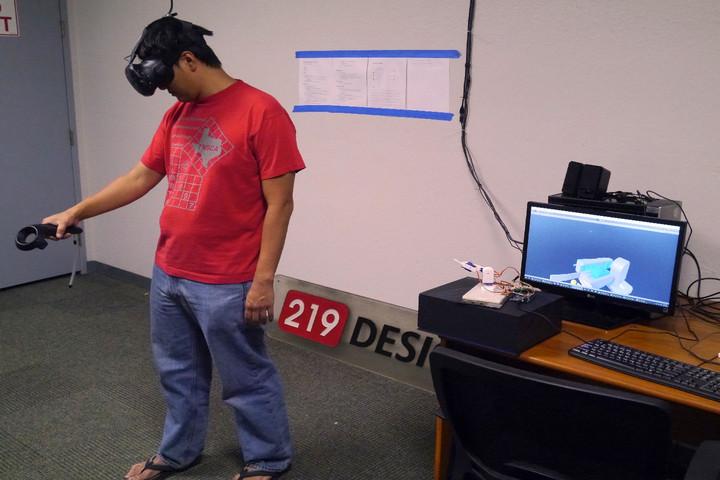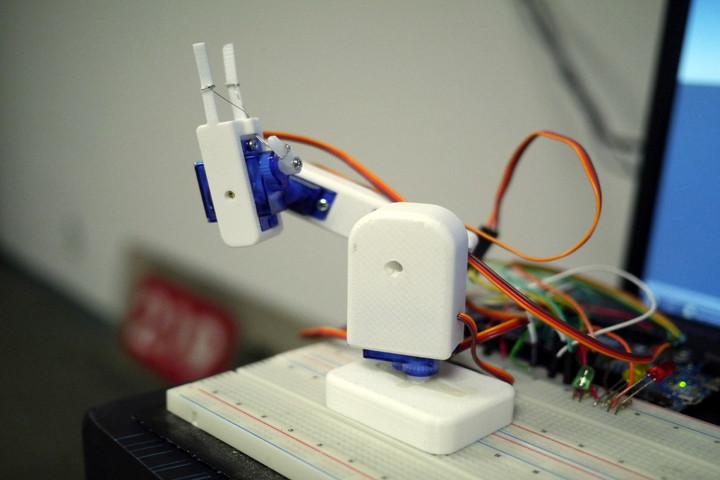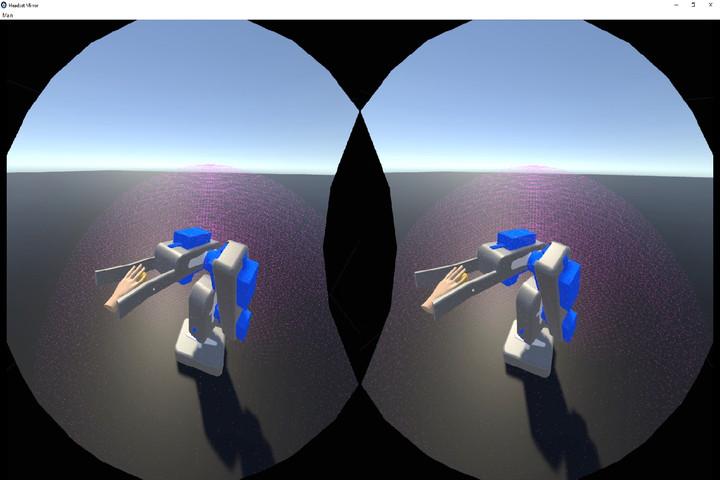 While robots may make complicated tasks look easy, programming a robot is anything but – particularly when you’re talking about large, complex industrial robots whirring away in factories. But with a new app developed by product engineering firm 219 Design, anyone should be able to program a robot easily, quickly and in virtual reality.
While robots may make complicated tasks look easy, programming a robot is anything but – particularly when you’re talking about large, complex industrial robots whirring away in factories. But with a new app developed by product engineering firm 219 Design, anyone should be able to program a robot easily, quickly and in virtual reality.
The concept for the tool arose after 219 Design acquired an HTC Vive virtual reality system and used it to design their first VR app: Interact VR, a tool that allows companies to evaluate products in virtual reality. The success of the app led to more brainstorming about other ways the company could incorporate virtual reality into their product design. They ended up with a new project: an app that uses a VR interface to control a tool in the real world.
As a proof of concept, the team created a robot arm, quickly 3D printing its parts on a MakerGear printer.
“To build this system quickly and efficiently we took advantage of the rapid prototyping tools and the iterative, flexible, and interdisciplinary design process we pride ourselves on here at 219 Design,” says intern Daniel Piedrahita. “Mathematical modeling, MATLAB simulation, computer aided design, open source electronics hardware, 3D printing, and rapid fabrication methods were all critical to the success of this project.”
The robot’s design was incorporated into an app that serves as a controller. The user, fitted with an HTC Vive, clicks and drags the virtual representation of the robot arm’s end effector in any desired path, while the physical robot follows. To “teach” the robot a new behavior, the user simply clicks a record button before dragging the end effector in the chosen range of movement. Once the recording is finished, the user hits “play” and the robot will repeat the movement.
 It’s virtual reality and robotics made easy – so easy that a child could potentially do it, in fact. A user doesn’t need any advanced programming skills to program a robot using the app; they only need the ability to walk the robot through the desired task before stepping back, pressing play, and watching the robot go to work. It’s easier than training a human worker, as a matter of fact.
It’s virtual reality and robotics made easy – so easy that a child could potentially do it, in fact. A user doesn’t need any advanced programming skills to program a robot using the app; they only need the ability to walk the robot through the desired task before stepping back, pressing play, and watching the robot go to work. It’s easier than training a human worker, as a matter of fact.
“For this proof of concept, our robot arm is quite small, but this same procedure could also be used to program powerful industrial robots,” says Piedrahita. “Imagine a factory that could be entirely designed and programmed in VR, including all of its machine actions. Instead of needing a specialist in industrial robots to spend lot of time and effort coding the behavior of the robot arm at a low level, with this infrastructure, anyone could easily and quickly program – or reprogram – the robot’s behavior effortlessly.”
Piedrahita believes that the system could eventually be used to interact with robots from remote distances. A surgeon, for example, could robotically operate on a patient without even being in the same room – or country, in theory. He or she would simply go through the motions of the surgery in virtual reality, while the robot performs the same motions in the operating room. It’s not that far-fetched, considering the fact that robots are already assisting with surgical procedures while the surgeon controls them from a bedside computer console.
Then there are the dangerous situations, like bomb removal or hazmat areas, that a robot could enter as a human controls it from a safe distance. While robots are already being utilized in these types of situations, 219 Design’s app could enable more workers to be able to operate them on the fly, without the need for advanced programming training.
We’ll see where the concept goes from here, but it looks promising. 219 Design has a strong track record and a client base in a diverse range of industries, from automotive to aerospace to medicine to fashion. As robotics are infiltrating almost every industry, an app like this could have broad appeal. You can see a demonstration of the technology below, and discuss further in the Virtual Reality & Robotics forum over at 3DPB.com.
[Source: 219 Design]
Subscribe to Our Email Newsletter
Stay up-to-date on all the latest news from the 3D printing industry and receive information and offers from third party vendors.
Print Services
Upload your 3D Models and get them printed quickly and efficiently.
You May Also Like
3D Printing Webinar and Event Roundup: February 2, 2025
We’re starting this week’s webinar with the exciting news that it is finally time for our Additive Manufacturing Strategies summit in New York City! There are a few other events...
Axial3D Raises $18.2M to Drive AI-Driven Medical 3D Printing Software
Great news from Axial3D, which has raised an $18.2 million investment round. Increasing their investment were Techstart, Clarendon, and Innovation Ulster Limited, while new investors included 57 Stars, Whiterock, and...
Texas A&M’s 3D Printed Pediatric Medication: A New Hope for Children with Toxoplasmosis
Toxoplasmosis is one of the world’s most widespread parasitic infections, with over a billion people affected globally, including an estimated 40 million Americans. Discovered in 1908, this infection is caused...
Ricoh Wants to Make Surgery Easier with Custom 3D-Printed Guides for U.S. Surgeons
Orthopedic and maxillofacial surgeons may soon have access to surgical tools designed specifically for each patient. Thanks to a new partnership between Ricoh 3D for Healthcare and Insight Surgery, custom...

































